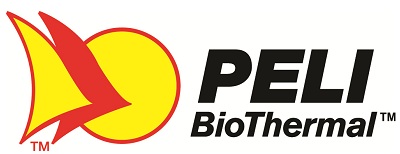Cold chain packaging and logistics perform an integral part in the safe shipment of pharmaceutical payloads worldwide.
To ensure efficacy of high value, life giving pharmaceutical products requires high performance cold chain thermal shipper solutions.
Whether purchased or rented, temperature-controlled packaging is a crucial component within the cold chain. The industry of cold chain logistics requires specific, specialist handling end to end as well as adherence to regional regulatory compliance criteria when shipping products from manufacturer to end destination.
The worldwide pharmaceutical cold chain logistics industry is vast and continues to be an area of significant growth, with projected global biopharma cold chain logistics spending in 2022 predicted to be $19.1bn to support an estimated global biopharma cold chain product sales in 2024 forecast to be in the region of $440bn1.
The pandemic has accelerated market growth with an increase of temperature-sensitive pharmaceuticals being transported across the globe and the continuing requirement for worldwide shipments of COVID-19 therapies, vaccines and boosters.
There are key considerations to be taken into account when selecting suitable shipping solutions for temperature sensitive payloads, including the type of thermal packaging needed, insulation required its quality/thickness/weight of Phase Change Materials (PCMs)and qualified durations.
However, there is also the question of whether to purchase packaging or rent while acknowledging that one size or solution doesn’t fit all shipping scenarios.
Current Market Trends
Currently the sector is seeing a rising rental requirement which is not limited to bulk shipments but applies also to parcel payload packaging as companies continue to outsource their cold chain. They want to own fewer, or zero, boxes or eliminate managing the associated requirements of maintaining owned thermal packaging products. Other ways of utilising temperature controlled packaging include long term leasing, or pay-per-use options. These options also remove the need to purchase, manage and maintain a large fleet of product.
Companies are increasingly looking to enlist the services of thermal packaging vendors who own the packaging products companies require for their pharmaceutical shipments.
Selected vendors can manage the responsibility of conditioning and repairing packaging products, which means companies only need to pay a per trip fee.
Rental is a good option for both bulk and parcel shipments with applications available for higher volume commercial pharmaceutical transportation options as well.
Whatever option is selected, be it to buy, single trip rental or longer-term lease, there is a corresponding emergence of advancements in associated track and trace capabilities. What we are seeing is the development of more advanced software platforms within the industry that are continually being enhanced. This is in response to the requirement, whether it is COVID-19 vaccines or cell and gene therapies being shipped, that there is a need to know the exact location and accurate temperature throughout the journey of the shipment.
All packaging products, whether rented or purchased, need to be high-performing and reliable to ensure they mitigate any potential temperature excursions on the journey from manufacturer to clinic or patient.
Therefore, when selecting a temperature-controlled packaging supplier they should offer a broad range of products and support services for both purchase and rent.
Any selected suppliers should also have a global footprint with an extensive network and infrastructure in place worldwide, including where key pharmaceutical hubs are located. Any selected supplier also needs to be able to offer a broad range of solutions to meet customers’ varied needs, alongside an associated fleet of products with an expansive network in place to offer consistency and availability globally.
Power of Purchase
Opting to purchase temperature controlled packaging means the product can be used immediately or added to stock for the future deployment of pharma payloads, which provides greater flexibility.
If the packaging product is reusable, it can be utilised to make multiple trips.
The purchaser will need access to conditioning equipment and processes required to ensure the packaging continues to comply with global regulatory requirements.
These necessary maintenance measures make sure the packaging product continues to perform properly, providing protection to mitigate any potential temperature excursions on future journeys.
From a financial perspective, once an investment has been made to buy boxes for pharma shipments; after it has been used it will then need to be stored. So, as well as taking into consideration capital costs, there is the need to take into account any storage space and inventory costs.
Purchased products will also require additional costs and services which means some companies will need to invest further to be able to deploy their packaging product. If storing owned products within a facility, which may suddenly be required for shipments, the packaging product will need to be conditioned and prepared properly, ready for use.
In addition to this there are logistics costs to consider and if deploying reusable packaging products, track and trace capabilities will need to be in place to ensure monitoring of the product can take place and the product can be successfully returned.
With the increased durability and with it, the extended life of modern shippers, some purchasers may need to carry out additional requalification of the product to ensure its performance to the required level over the lifetime of the asset. Purchasers need to understand life cycle performance, the likely return % of the product, cost of maintenance (damage to packaging, coolants, insulation) track its obsolescence and ultimately end of life asset removal and replacement.
Reusable packaging, whether owned or rented is still less costly in the long run due to the significantly lower costs per trip than single use packaging.
Rental Rewards
Renting a temperature controlled shipping container provides the flexibility to chose the service and application that best suits a customers’ requirements, logistics profile and budget.
Rental is a major growth area in the sector currently as customers increasingly look for suppliers who can provide everything for them from packaging products, as well as manage the product’s deployment, logistics and monitoring.
This is the key advantage of the Rental / leased option. The asset management aspects are removed and placed in the hands of the system provider, who have to ensure they have the staff and infrastructure, with the correct skill sets, to implement a successful rental programme. The system provider also has to ensure that they have a range of ‘fit for purpose’ thermal shippers available to rent, as the success or failure of the rental programme depends on assets being available.
Rental programs offer a number of advantages including spreading the cost over time while delivering the performance needed for global pharmaceutical payload requirements. Rental can be more cost effective especially if a company makes regular shipments on a regular route or plans to make high volume shipments.
Another reason some companies opt for rental is because they don’t necessarily have the time or resource to arrange everything themselves when shipping their high-value products. Enlisting the services of a temperature controlled packaging vendor can offer access to a broad portfolio of products, a one stop shop, as well as providing all associated services.
The benefits include not having to make any capital investment upfront or maintain and manage the packaging products because specialist providers are doing that on the customers’ behalf and managing any associated risks.
Rental and leasing options provide all the benefits of access to thermal performance technology with greater flexibility to help lower the cost-per-use, alongside experiencing payload volume efficiency and lower distribution costs.
Thermal packaging vendors specialising in rental systems provide a menu structure which companies can select from. There is often an option to rent a product and the company can carry out its own conditioning, packing of the product and deploy it, providing a leasing option within the market.
An alternative option is for companies to relinquish responsibility to the packaging company. This means after acquiring a rental asset everything else is provided by the packaging vendor. This can include conditioning, packing of payloads, any associated monitoring required alongside the deployment and return of the hired packaging product.
Rental options provide access to packaging products and cold chain logistics services when they are required, mitigating the need to provide capital for purchased packaging products and the need to store products within warehouse space when not in use.
Sustainability and Reuse
Rental is a reuse program in itself. Rental packaging customers don’t have to concern themselves with the logistics of returning a rented product or the end of life of that product and sustainability thereof because as they don’t own it, therefore those responsibilities lie with the company who are renting out the products.
It is also the renting company’s responsibility to provide transparency linked to reused products. Increasingly operators utilising and operating within the pharma logistics space require assurances that products are reused and are sustainable to ensure the products credentials align with any sustainability goals or polices the customers’ company has.
There is an increasing requirement for packaging vendors to provide details to demonstrate how their products are reused, alongside plans for the products’ end of life, whether it can be recycled or key components can be reused.
Importance of Infrastructure
While there are advantages to opting for the rental option to rent or lease is not always appropriate for every location or shipping situation. Rental requires logistics networks that guarantee the recovery of the shipper. This works better within mature and existing shipping/pharma lanes, which have the necessary infrastructure to support shipments and well established logistics networks including within the US, Europe, Europe to Asia or US to Asia.
Issues can arise when shipping pharmaceutical payloads to more remote locations, for instance if deploying a consignment of vaccines from Europe or the US to the Republic of the Congo. In such circumstances rental options are not as feasible due to the remoteness of some regional locations which do not have the necessary infrastructure in place for return logistics.
Spiralling costs could be a barrier for return logistics when shipping to more remote regions which don’t have established return lanes or where it is deemed too expensive to retrieve shippers. This was highlighted in the early stages of the pandemic when commercial airlines ceased flights and planes, which would ordinarily have provided cargo space for returning shippers, were grounded due to the global lockdowns.
The industry initially saw a spike in the deployment of single use products when aircraft were first grounded as companies couldn’t guarantee they could get their product back, however that trend has since reversed and rental requirements reinstated again.
The pandemic response wouldn’t have worked as well using a rental model because no single supplier owned an appropriately large inventory fleet necessary to provide the hundreds of thousands of boxes required to deploy the many millions of vaccines and therapies being shipped worldwide.
Conclusion
Whether opting to purchase or rent, the transportation of temperature controlled, time-sensitive pharmaceutical payloads pose challenges.
To meet pharmaceutical manufacturers’ requirements and achieve regulatory compliance, it is vital to utilise established lanes. An integrated supply chain with predictable and repeatable shipping and receiving performance is imperative whether utilising rental or purchased shipper solutions.
Deploying shipments via established lanes helps to ensure pharma payloads maintain integrity throughout the cold chain. To achieve this the sector continues to implement improvements.
IATA’s CEIV Pharma program demonstrates how the industry is increasingly focused on improvements, building and reinforcing a network of certified pharmaceutical trade lanes, to meet consistent standards and delivery of pharmaceutical handling excellence throughout.
Its creation of a globally consistent and recognised pharmaceutical product handling certification reflects the cold chain collaborators consensus to continue to improve pharma logistics worldwide.
We will continue to see such improvements to existing networks including increased availability of flights offering more options to use single use or return rental shipper solutions.
Ultimately, whether renting or buying packaging products, when selecting a temperature-controlled packaging vendor for pharma logistics, the extent of their global network and the scale of the fleet of products provided should be a critical consideration.
Reference:
(1) https://www.statista.com/topics/4321/cold-chain-logistics/#dossierKeyfigures

















![Sirio Launches Global Research Institute for Longevity Studies [SIA]](https://www.worldpharmatoday.com/wp-content/uploads/2019/09/Sirio-218x150.jpg)



